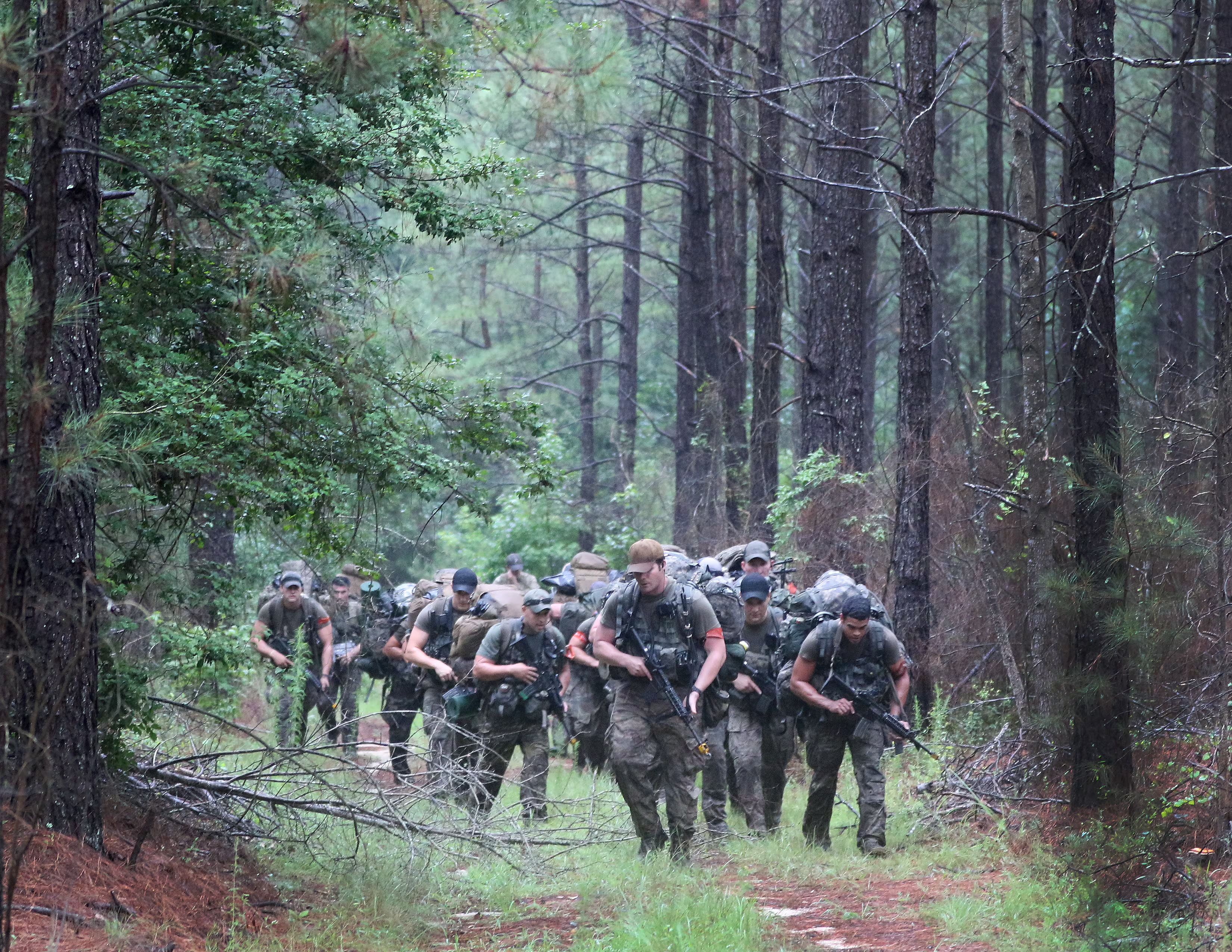CAMP MACKALL, N.C. — Green Beret candidates respond to a bomb blast, dashing into the treeline from the remote camp where they were chatting with their partner force chief mere moments earlier.
Half-a-dozen guerrillas are wounded by the detonation. As the casualties are triaged, one local fighter is found with a cell phone among his belongings. That’s what activated the bomb, the chief tells the Americans.
“Are you sure?” the Green Beret team leader asks. “Have you had problems with this guy in the past?”
The Americans want to interrogate the potential turncoat, but the chief has other plans.
From the camp, instructors hear a gunshot echo in the woods. An extrajudicial killing “is obviously not ideal,” one Special Forces instructor said.
It’s a dramatic training scenario that puts students in a situational dilemma. The Green Beret candidates must influence the guerrilla chief to make good decisions, even when he has a “strong personality,” the instructor noted. At the end of the day, the Green Berets must also assess whether he can be a trustworthy partner, with laws like the Leahy amendments restricting the provision of security assistance to human rights violators.
These students are in the revamped tactical skills phase of the Special Forces Qualification Course, which adds two weeks of foreign internal defense training before students embark on the famed Robin Sage culmination exercise. While Robin Sage focuses on unconventional warfare where Green Berets use a resistance movement to expel or overthrow an opponent force, foreign internal defense is about stabilizing governments as well as wooing potential allies.
The “Q Course” has undergone big changes this year, many of which are aimed at shaping the operators needed for what the Pentagon sees as a shift to the “competition phase” of rebuking Russia and China.
Eyeing the ‘competition phase’
“We, as SOF, are uniquely qualified to operate under that threshold short of armed conflict,” said Maj. Gen. Patrick B. Roberson, commander of the Army’s John F. Kennedy Special Warfare Center and School at Fort Bragg.
If war does arise in a country where Green Berets have been training foreign partners, “we can turn that very quickly into any type of conflict and use them as our vanguard force,” Roberson said.
Conflict with China and Russia isn’t necessarily the focus of the Pentagon’s National Defense Strategy. The document argues the need to compete for influence and attract new partners in the Indo-Pacific and Africa. The Green Berets’ foreign internal defense mission is well-poised to accomplish that.
“Where we’re at, training indigenous forces, Russia and China are not,” one senior enlisted Green Beret said during a three-day look at the optimized course.
The Q Course is now designed to be completed in a little more than 12 months for all Green Berets, except those training to become medics. Four classes start each year, allowing the course to align training with Army Special Operations Command’s psychological operations and civil affairs students.
“It permits multiple touch points for civil affairs, PSYOP and SF to have integration throughout the entire qualification course,” said Lt. Col. Carla Kiernan, commander of the PYSOP training battalion. “We need to be integrated into the planning at all stages to be an effective tool for someone to leverage.”
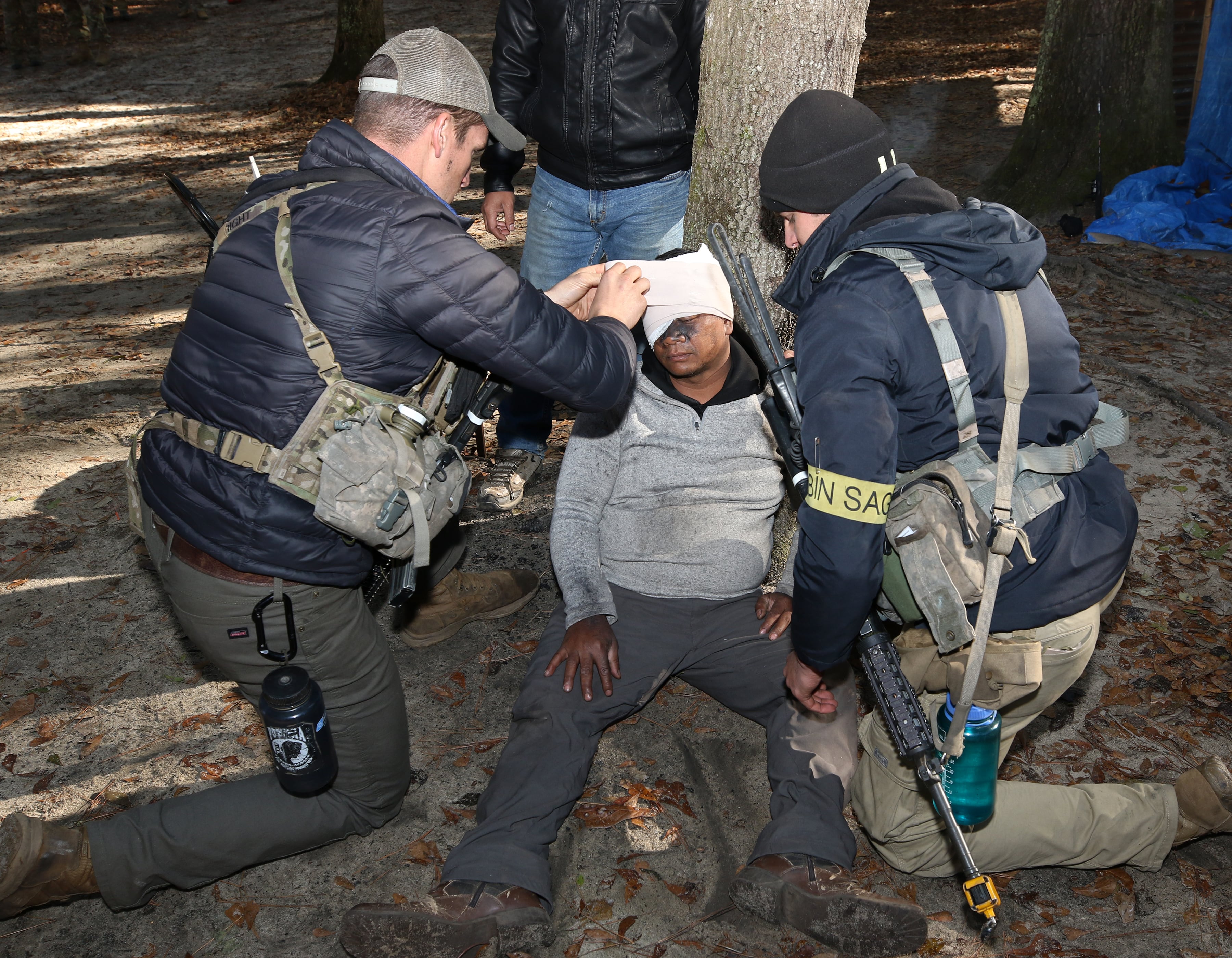
Prior to streamlining, PSYOP training was still focused on counter-insurgencies, Kiernan added. The changes, which add about three weeks to the active duty PSYOP course, introduce PSYOP soldiers to foreign internal defense and emphasize strategic planning with diplomats.
The MOS phase for Green Berets, where soldiers become specialists in either medicine, weapons, engineering or communications, is now front-loaded. Candidates who pass selection will learn their specific job skills before beginning the tactical skills phase.
For Green Berets in particular, a lot of superfluous material has been removed from the nearly two-year course to shorten it.
A decade ago, the Q Course was flooded with new tactics and techniques that were the products of hard-fought lessons in active warzones. Special Forces teams, known as Operational Detachment Alphas, were on a 1:1 dwell-to-deploy ratio. The tight turnaround meant that the Q Course “product” had to be much better prepared.
“They were doing heel-to-toe rotations to Iraq and Afghanistan, so they didn’t have a lot of time to do that collective training,” said Col. Stuart Farris, 1st Special Warfare Training Group commander.
Now, however, the deployment ratio is at about 1:2, meaning a six-month deployment should net a one-year rest period. That means more time to train at the unit level, and some of the additional instruction added to the Q Course during the height of Middle East conflict can be kicked back to the groups.
Truncated training
During the revamp, leaders took the opportunity to discard training tasks seen as relics of the past, or found to be something a Green Beret could learn down the line if there was a necessity, one Green Beret officer managing MOS training said.
For instance, 18 Echoes — Green Beret communications specialists — are no longer taught to build a computer in their introductory job exercises. That skill can be taught on-team if there’s a need, similar to how the Q Course did away with morse code years ago.
Pushing some training back to the operational teams also helps Green Berets focus on the tactics that will be more relevant to the region of the world their Special Forces group is actually aligned with.
“Some of your counter-IED measures might not be as good down in Kandahar, compared to Herat, which is typically colder and where you can use your thermal [device] to see an IED because of the temperature change from the metal in the ground and the surrounding soil,” an instructor said as an example of how varied tactical lessons are even within one country.
The command also consolidated firearms exposure for 18Bs — Green Beret weapons specialists.
“They were spending a full day on one weapon, so we did a hard look at which are the critical weapons they’ll see throughout the world and which represent a type of weapon, the way it functions,” said the Green Beret officer.
An obscure Southeast Asian gun isn’t necessary for all 18Bs to learn, for instance, and the ones heading to ODAs focused on that region can block off a day to become familiar with it once they arrive.
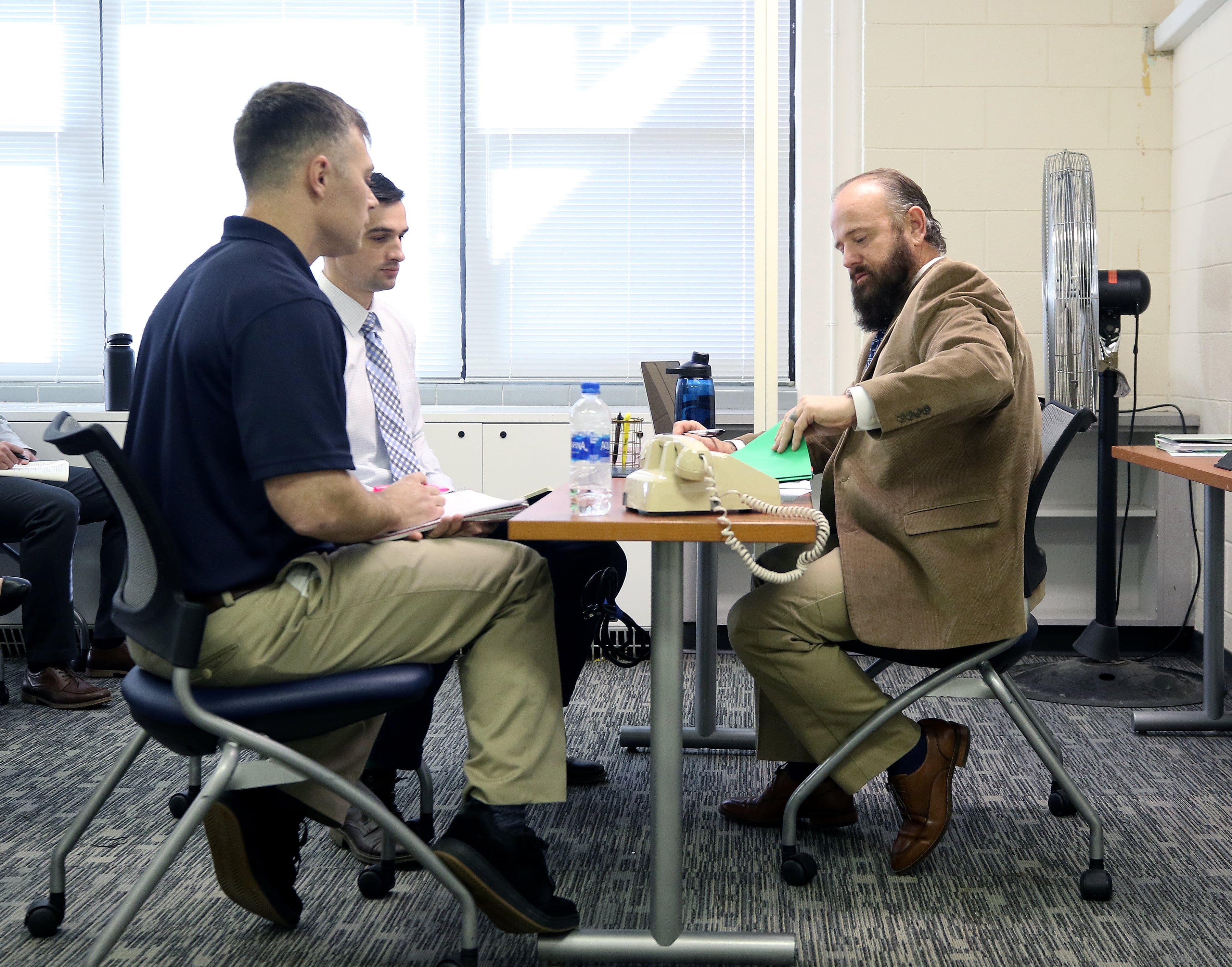
The course changes also reflect input from active ODA members. One recommendation was that mortar training shouldn’t be changed for 18Bs, and it wasn’t.
“They said what they wanted and what they didn’t want; what they would take back and what was no longer necessary. And that’s how we incorporated all this,” the Green Beret officer said.
Feedback on the course changes has been largely positive at the battalion level, though some at the ODA level showed hesitation, the officer said. Green Berets already on teams often want the Q Course to deliver the best young operator without worrying about how long it would take, he added.
“We’ll see in about a year or so when we start getting feedback,” he said.
The first class that will complete the new course started in mid-September 2019. They’ll finish in April and begin language training until about September 2020.
One year is all it takes
Some full mission planning and field exercises previously included in the MOS training were deemed redundant given that trainees would see those scenarios during Robin Sage. Nixing those programs helped bring down course completion time significantly.
“One year is about the right amount of time that it should take. Anything more than that is too much, and historically, that’s about what it has taken,” Farris said.
The changes don’t concern Rick Lamb, a retired Army Green Beret command sergeant major who served in Mogadishu and Panama.
“I think it’s a good idea. I don’t see any issues with it at all,” Lamb said, adding that the Q Course took him about a year complete in the mid-1980s. “That’s what it used to be. You’d go through selection and assessment, then you’d go through MOS training. Following that you’d go through the unconventional warfare portion of it ... then you’d go out and do Robin Sage.”
The Q Course should be thought of as an aptitude test and not a finishing school, according to one senior enlisted instructor. “The true learning, the true becoming a Green Beret happens only on an ODA,” he added.
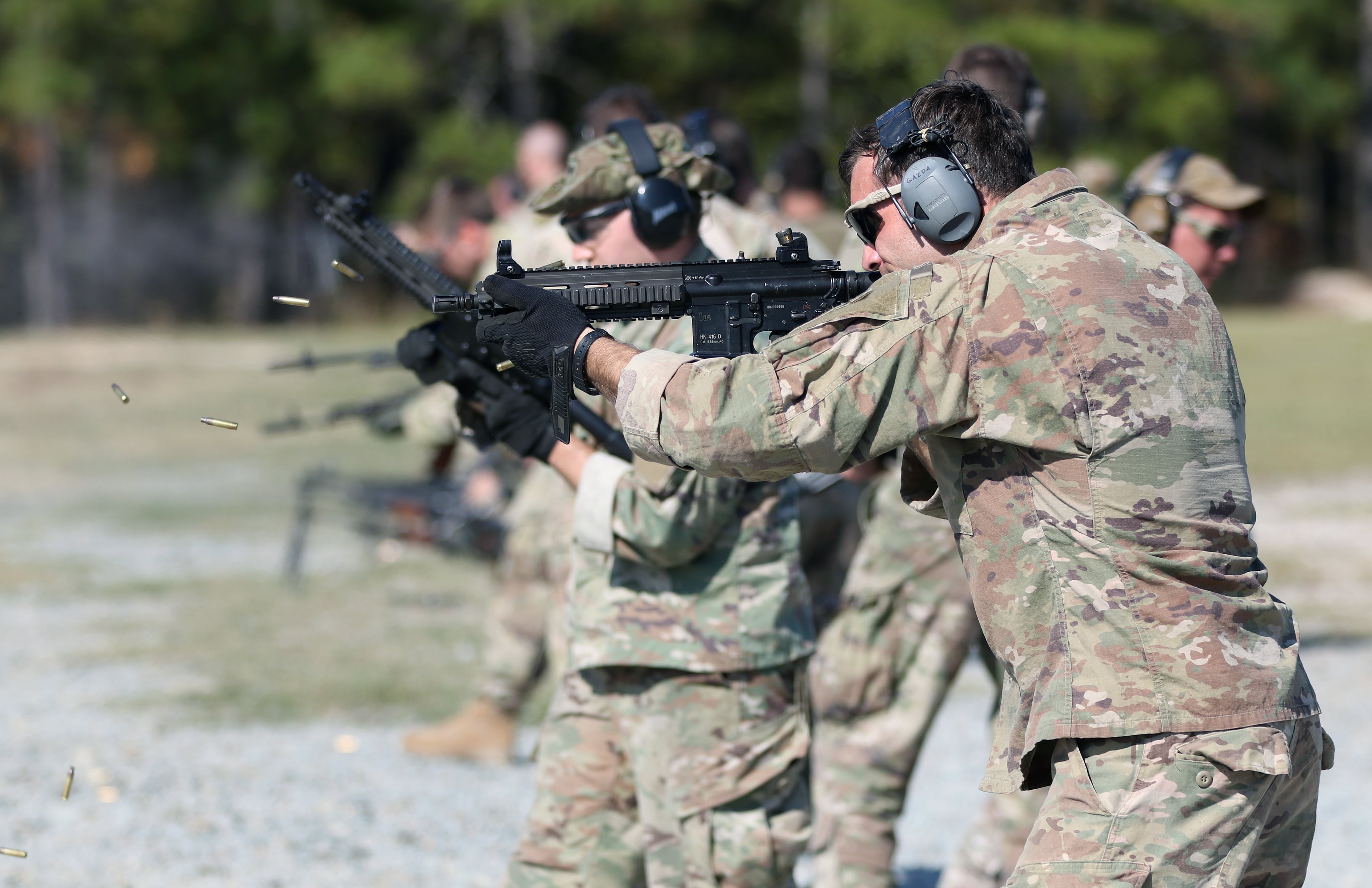
The changes were not without controversy, however.
Roberson took control of the Special Warfare Center and School from Maj. Gen. Kurt Sonntag this summer. Sonntag’s tenure and the changes he brought were criticized in an anonymous 2017 email from one Green Beret instructor as a way to boost graduation rates and ensure that women can pass. As of November, only three women graduated selection, and none have finished the entire Q Course.
Nothing in the 24-day selection course was changed in the optimization, according to leadership. Course officials stressed that all the changes to the course were done at the request of, and with input from, the operational force.
“Every generation likes to think they went through the last hard class,” Farris said. “When I see the students coming through the course now, I think, ‘they’re a lot better than what we were.’”
The course optimization isn’t just about Green Berets. The 1st Special Warfare Training Group oversees training pipelines for three jobs, each with their own culmination exercise catered to their specialization.
Broadly speaking, civil affairs focuses on establishing local governance, PSYOP disseminates influencing campaigns through media and Special Forces raises and trains a guerrilla force. That will all stay the same during training, but the optimization finally brings all three culmination exercises under the same alignment.
Uniting the ‘three tribes’
The three courses support each other during the culmination phase, with civil affairs looking at ways to stabilize gains made as Green Beret students manage partner forces and push the forward line of troops along in a conflict scenario. At the same time, reports sent up by students are used to build out messaging missions by PSYOP trainees.
Group leaders said the new course flow will help trainees understand the skills each of the three “tribes” brings to Army special operations. The new training pushes PSYOP soldiers to be more proactive with messaging, as well.
Some of the changes incorporate lessons on how to interact with State Department officials and how to utilize social media alongside a partner force, both of which have been at play in recent conflicts.
“We’re looking at Syria and the Philippines and it’s informing what we’re developing,” a PSYOP officer managing the course said. “My guys were on the ground in Syria and they built out the media capabilities of local tribal councils. A lot of the partners we get with are media savvy, they’re in this younger generation. However, what we’re teaching is how to go after a specific desire or behavior you’d like to change.”
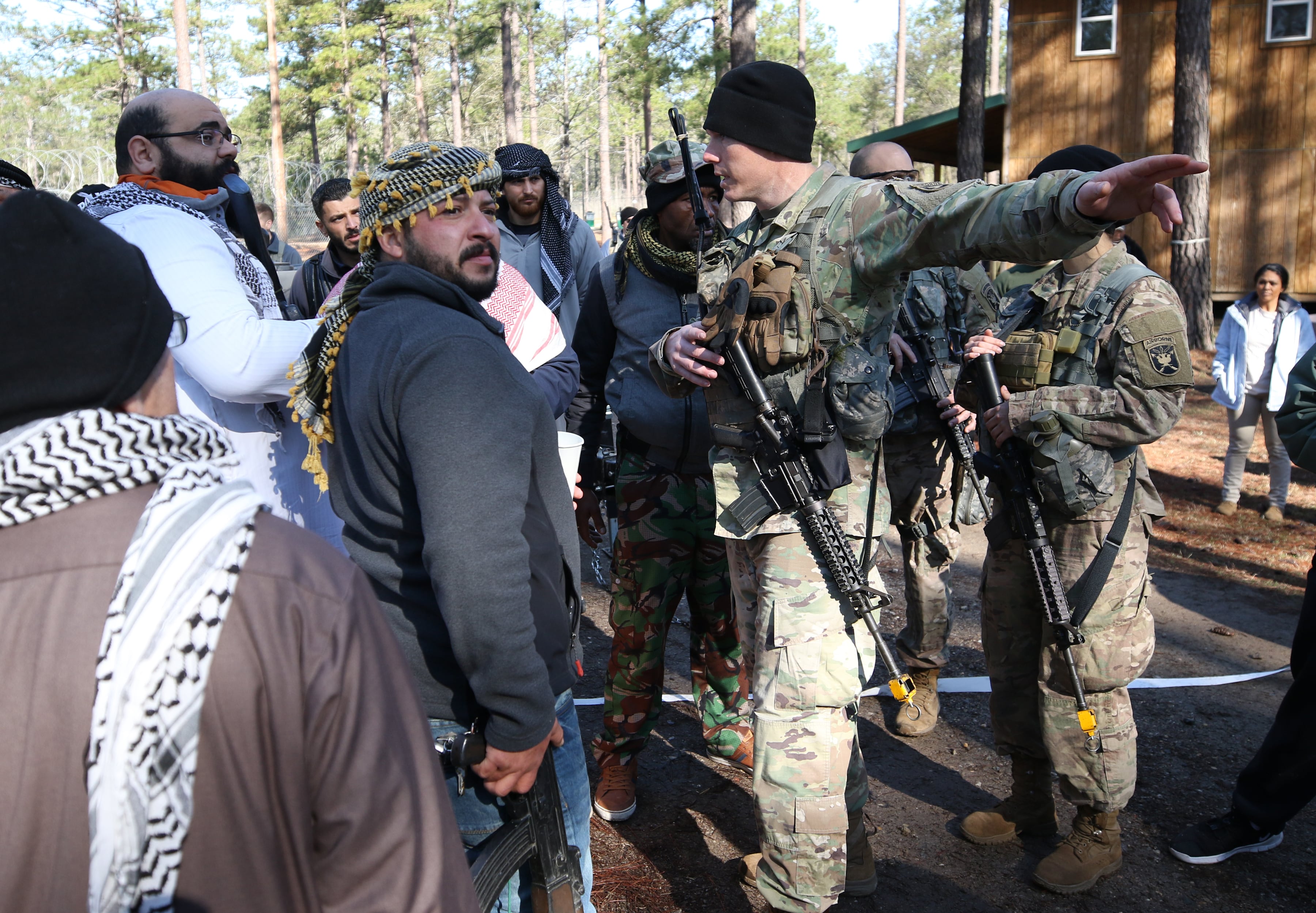
Lessons from Syria and Iraq are on the minds of many special operations leaders at Fort Bragg.
Roberson previously served as the commander of the special operations task force fighting the Islamic State. His experience back then influences how he guides training changes for Army special operations now.
Iraq’s elite counterterrorism troops, commonly called the Golden Division, were originally raised and trained in 2003 by the U.S. military. When Americans returned to Iraq, the Golden Division acted as a “vanguard” force. It was the first to breach Mosul after more than two years of ISIS occupation.
“We came back in 2015 and that was our partner against ISIS. For Iraq and Syria, ISIS is a near-peer competitor. So we were able to latch onto that force that we built ... and take it all the way to victory,” Roberson said.
Foreign nationals trained by U.S. forces will also go on to write their own countries’ national defense plans. Training them now can ripple decades down the line, according to Special Warfare Center and School leaders.
“That’s how you compete,” Roberson added. “We’re going to go to these places and we’re going to be there so our adversaries are not. We’re going to be the partner of choice. We’re going to work our way up that food chain, up their [Ministry of Defense] and [Ministry of Interior], and yeah, they’re going to choose us over our adversaries.”
Kyle Rempfer was an editor and reporter who has covered combat operations, criminal cases, foreign military assistance and training accidents. Before entering journalism, Kyle served in U.S. Air Force Special Tactics and deployed in 2014 to Paktika Province, Afghanistan, and Baghdad, Iraq.
